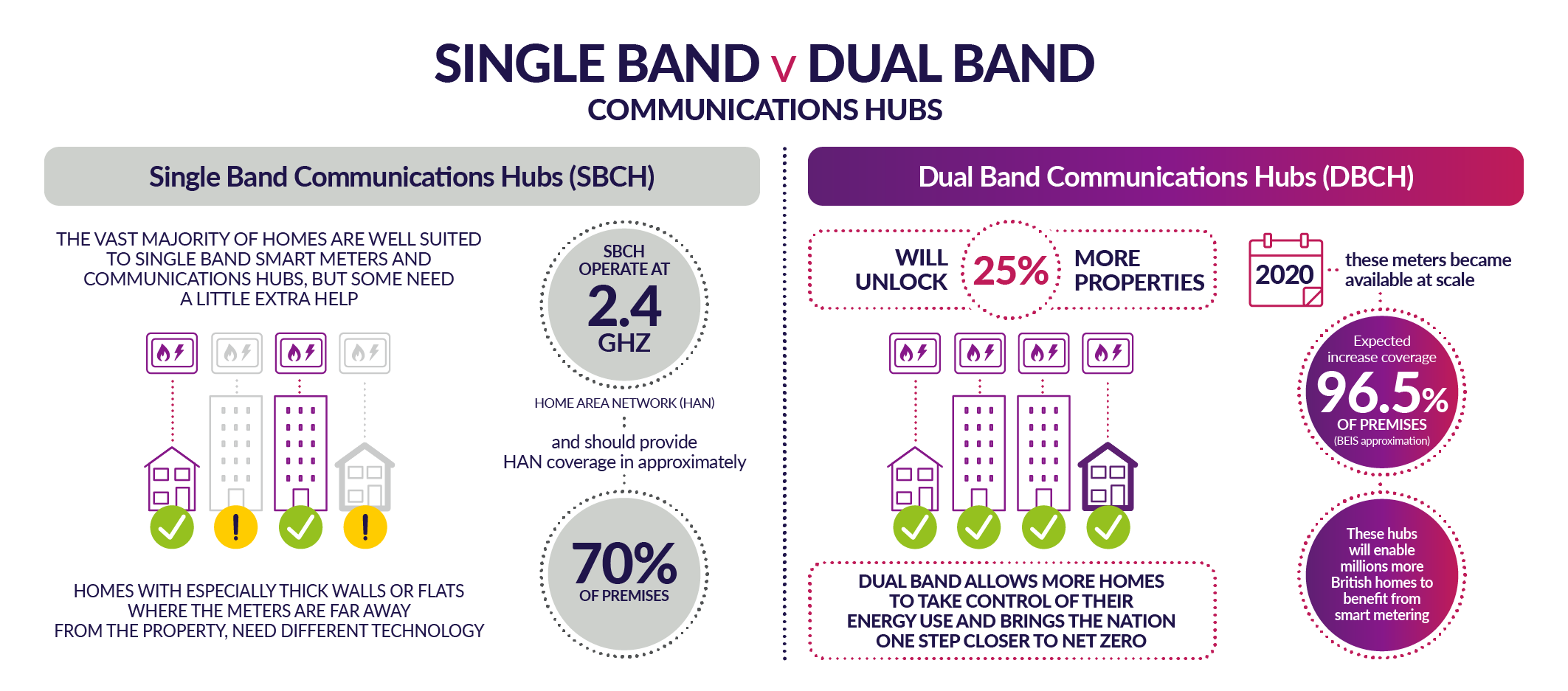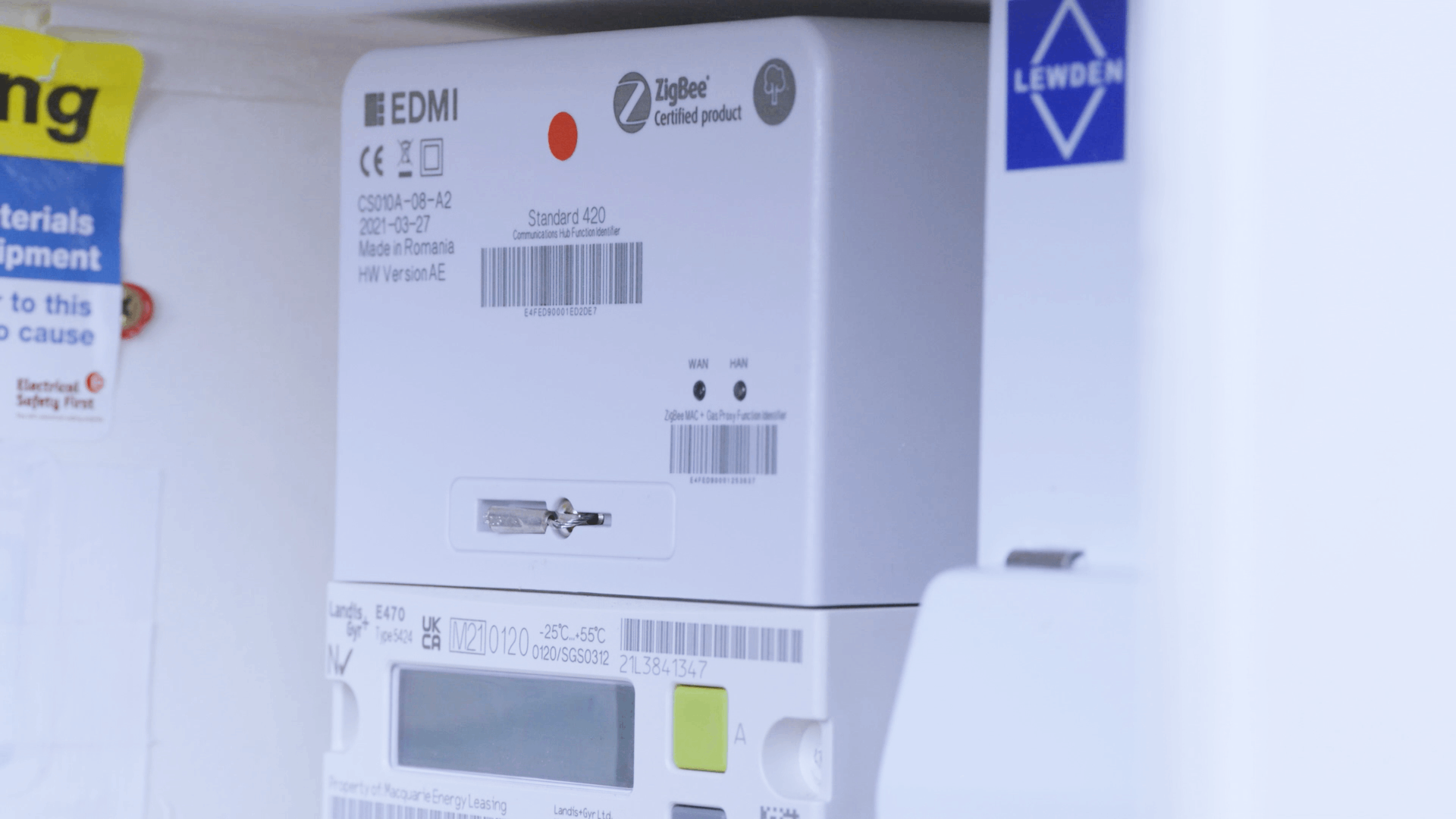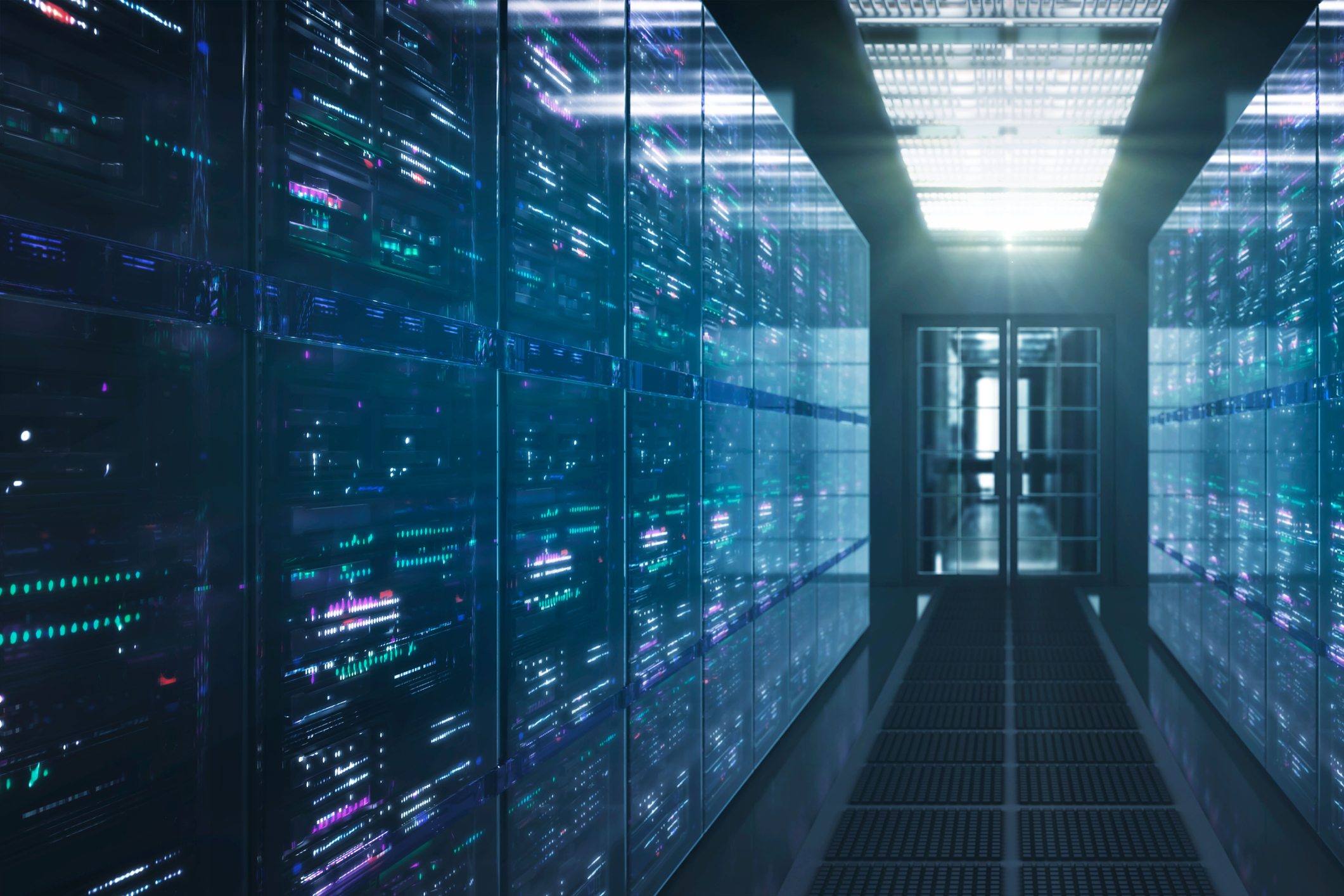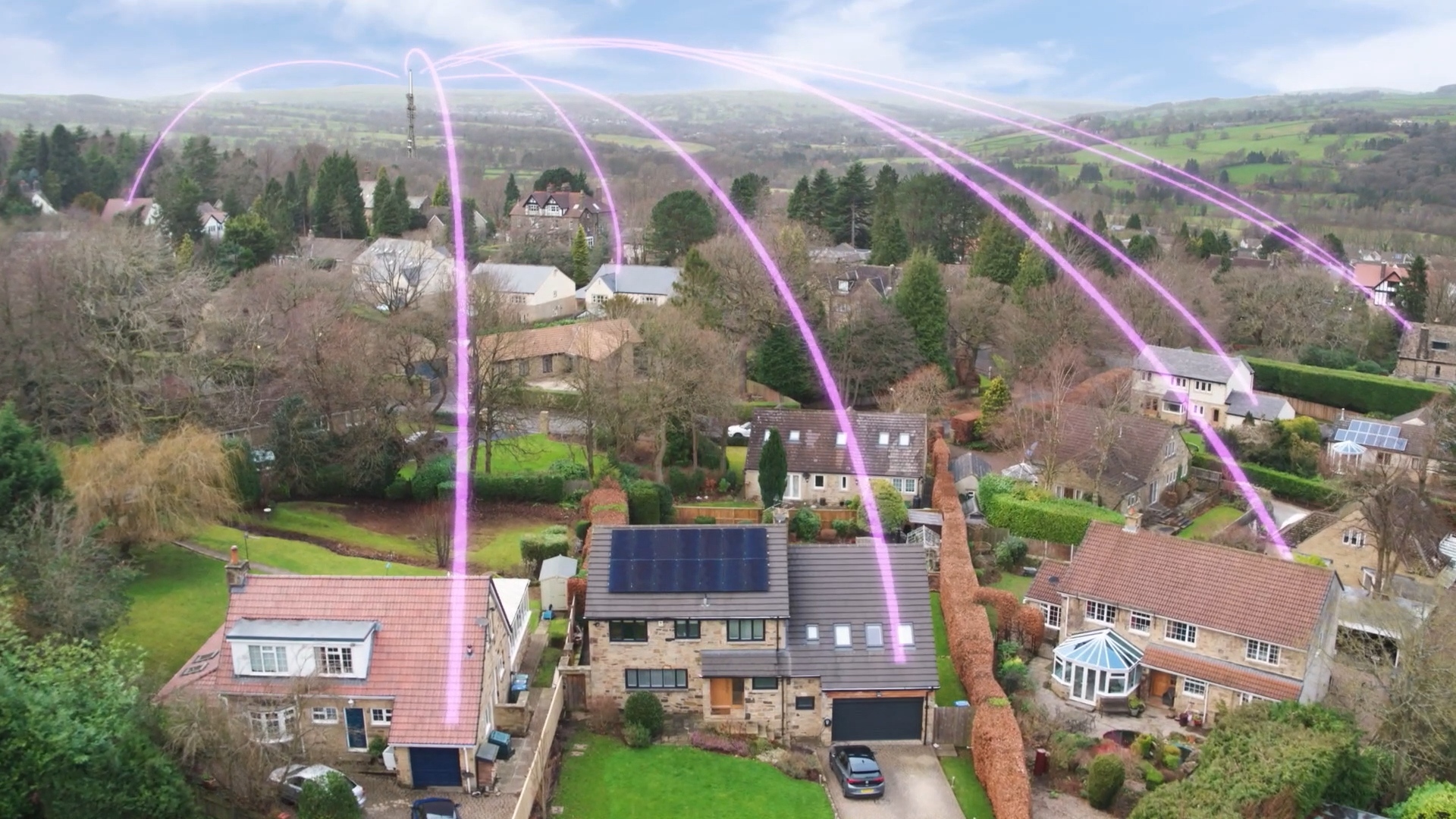Enabling more British homes to benefit from smart meters
Single Band Communications Hubs (SBCH) are able to provide Home Area Network (HAN) coverage in approximately 70% of premises. For some buildings, like blocks of flats or where walls are very thick, the smart meter can't communicate with the communications hub. To solve this problem, Dual Band Communications Hubs (DBCH), which offer a choice of frequencies, are now being installed. They use a HAN frequency of 868MHz along with the existing 2.4GHz frequency of SBCH.

Dual Band Communications Hubs are expected to increase smart meter coverage to 96.5% of premises
What is a communications hub?
A smart metering installation usually includes gas and electricity smart meters, an in-home display and a communications hub. These devices communicate with each other via a Home Area Network which is generated by the communications hub.

Got a question?
Our most frequently asked questions
What are DBCH and why are they needed?
The current communications hubs have a single band 2.4 GHz Home Area Network (HAN) frequency and are known as Single Band Communications Hubs (SBCH) and should provide HAN coverage in approximately 70% of premises. For some of Britain's households like blocks of flats or where walls are very thick, the smart meter installed can't communicate with the communications hub. So in 2020, a more sophisticated hub with a choice of frequencies started being installed. These are called Dual Band Communications Hubs (DBCH). They use a HAN frequency of 868MHz along with the existing 2.4GHz frequency. DBCH are expected to increase coverage to 96.5% of premises. These hubs will enable millions more British homes to benefit from smart metering, which can in turn help them monitor their energy usage.
When did DBCH go live?
During August 2020 – September 2020, we completed the joint testing and implementation strategy with each energy supplier.
Are energy providers already installing DBCH?
Yes, dual band devices are currently being installed and are available across Britain.
Are there any differences in installing a DBCH compared to a SBCH, or any of the other communications hub functions or processes?
Throughout the design of DBCH, we have been mindful of the impact on energy providers and consumers. This design has ensured that a DBCH operates in exactly the same way as a SBCH, and that all of the communications hub processes an energy provider may use, remain the same. However, DBCHs can make use of special messages or Service Requests (SRs) to allow the energy provider to monitor the communications hub's use of the 868MHz frequency.
Will DBCH interfere with other devices in my home that make use of an 868MHz frequency?
No. The additional functions and SRs that are used by DBCH are specifically set up to ensure that any existing 868MHz frequency is not affected through channel scanning and optimisation.
How much further does the DBCH extend the range of the Home Area Network (HAN)?
Unfortunately, because of the number of combinations of smart meter installation locations in Britain, property types and building materials, we are unable to quantify specifically how much further a DBCH will extend the HAN. However, HAN survey tools are available from specialist network monitoring and calibration suppliers.
Where can I get more information on DBCH?
If you are a householder or business energy consumer, please contact your energy provider, as they will be able to provide specific information in regards to your circumstances. If you are an energy supplier and would like to know more about the future development of DBCH, please email the SMETS2 PMO team at SMETS2.PMO@smartdcc.co.uk. If you are an energy provider with a question about a current production incident, please email the DCC Service Centre at ServiceCentre@smartdcc.co.uk.
How do SMETS2 meters communicate?
For the SMETS2 meter to work, the information from your smart meter goes first into a communications hub, which is usually connected into the electricity meter, and then through radio waves to the Data Communications Company. Find out more about how smart meters send readings.
Further reading


